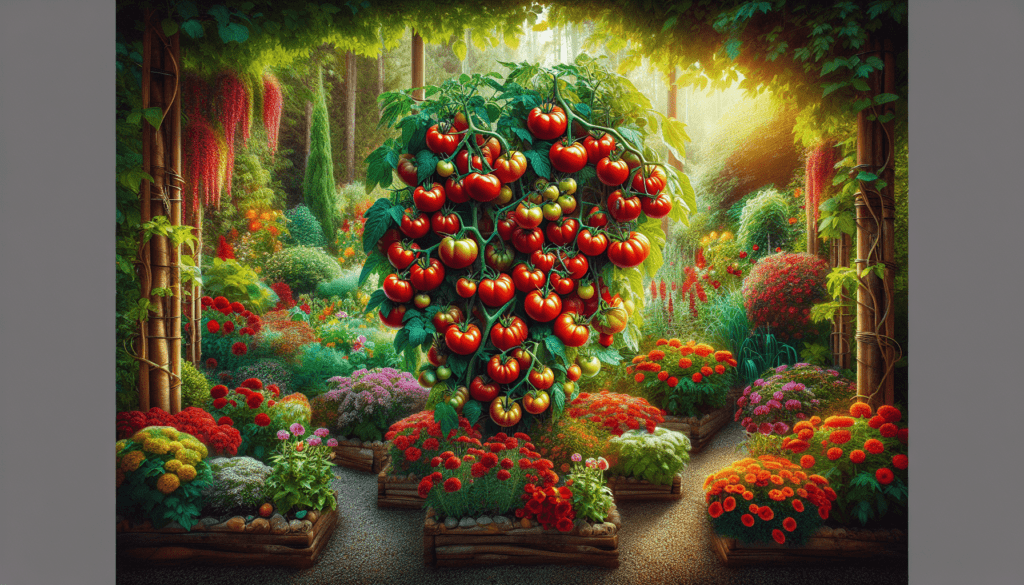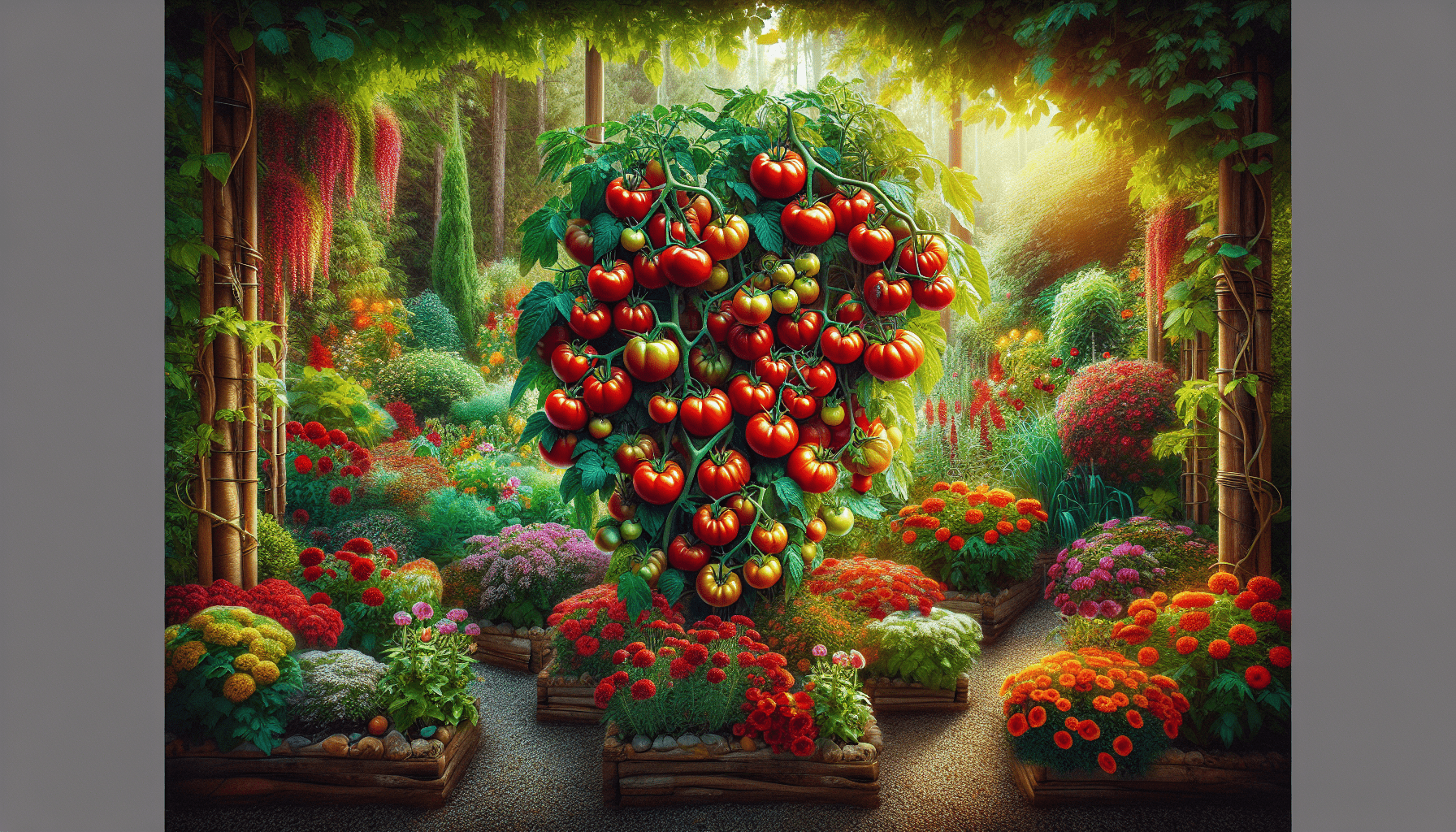Edible Landscaping for a Beautiful and Productive Garden” invites you to transform your outdoor space into a vibrant oasis that nourishes both body and soul. Imagine a garden where fruit trees, vegetable patches, and fragrant herbs weave seamlessly with ornamental plants, creating a delight not only for your eyes but also for your kitchen. This guide provides invaluable tips on selecting plants that thrive together, designing aesthetically pleasing arrangements, and maintaining your garden with ease. Dive into a journey of cultivating beauty and bountiful harvests right in your backyard. Have you ever considered transforming your garden into a space that is both visually appealing and productive? Imagine strolling through your yard, plucking fresh fruits, vegetables, and herbs right off the plants, all while being surrounded by a beautiful landscape. This idea of merging functionality with beauty is the core of edible landscaping. Let’s dive into how you can achieve an aesthetically pleasing and productive garden.
What is Edible Landscaping?
Edible landscaping is the practice of integrating food-producing plants into your decorative landscape. Instead of relegating fruits, vegetables, and herbs to a separate garden area, you incorporate them into your overall design.
By weaving these edible plants through your existing landscape, you benefit from fresh, homegrown produce and create a multifunctional space. Plus, edible plants can be just as charming and colorful as ornamental ones.
Benefits of Edible Landscaping
The advantages of edible landscaping extend well beyond merely having a beautiful garden.
- Fresh and Nutritious Produce: One of the main appeals is the ready availability of fresh fruits, vegetables, and herbs.
- Cost Savings: Growing your produce can significantly reduce your grocery bill.
- Environmental Impact: Homegrown food has a smaller carbon footprint than store-bought produce.
- Aesthetic Appeal: Edible plants add a unique beauty to your garden with their varied shapes, colors, and textures.
- Biodiversity: A garden that includes a variety of edible plants can attract beneficial insects and wildlife.
Getting Started with Edible Landscaping
Before you dig into edible landscaping, it’s essential to create a plan. Proper planning will help you use your space efficiently and ensure that the plants you select thrive in your climate.
Assessing Your Space
Begin by surveying your current garden setup. Note the areas that receive full sun, partial shade, or full shade over the course of a day.
| Light Condition | Recommended Plants |
|---|---|
| Full Sun | Tomatoes, peppers, most herbs |
| Partial Shade | Leafy greens, carrots, beets |
| Full Shade | Mint, chives, leafy greens like lettuce |
Also, consider the soil quality and drainage in different parts of your garden.
Choosing Your Plants
When selecting plants, consider what you and your family enjoy eating. Here are some suggestions to get you started:
- Fruits: Blueberries, strawberries, apple trees, and fig trees.
- Vegetables: Kale, tomatoes, bell peppers, and zucchini.
- Herbs: Basil, rosemary, thyme, and oregano.
A good mix of perennial (lasting several seasons) and annual (one season) plants will keep your garden vibrant and productive year-round.
Designing Your Edible Landscape
Design plays a crucial role in edible landscaping. Here are some layout ideas and tips:
Create Zones
Divide your garden into zones based on light conditions and plant needs. For example, place sun-loving fruits in areas that receive the most light and shade-tolerant herbs in spots with limited sunlight.
Use Vertical Space
Maximize your garden’s productivity by growing climbing plants like beans and cucumbers on trellises.
Plant Compatibility
Choose plants that complement each other and can grow together harmoniously. Companion planting can help with pest control and improve overall plant health.
| Companion Plants | Benefits |
|---|---|
| Tomatoes and Basil | Enhances flavor and repels pests |
| Carrots and Onions | Onions deter carrot pests |
| Cucumbers and Nasturtiums | Nasturtiums deter cucumber beetles |

Maintaining Your Edible Landscape
Creating an edible landscape is just the beginning. Maintaining it ensures that your garden remains productive and beautiful.
Regular Care and Maintenance
Routine tasks include watering, weeding, pruning, and harvesting. Using organic mulch can help retain soil moisture and suppress weeds. Composting provides essential nutrients to your plants.
Pest and Disease Management
Edible plants are susceptible to pests and diseases just like ornamental plants. Regularly inspect your garden for signs of trouble and take action promptly.
Integrated Pest Management (IPM) strategies, such as introducing beneficial insects, can help manage harmful pests without using chemicals.
Seasonal Considerations
Your edible landscape will evolve through the seasons. Here’s a brief overview of some of the tasks you’ll need to undertake throughout the year:
Spring
- Planting: Start planting cold-tolerant crops like lettuce, peas, and radishes.
- Soil Preparation: Add compost or organic matter to enhance soil fertility.
Summer
- Maintenance: Water plants deeply and regularly, especially during dry spells.
- Harvesting: Regularly pick ripe fruits and vegetables to encourage continuous production.
Fall
- Clean-Up: Remove spent plants and add them to your compost.
- Planting: Start fall crops like kale and spinach.
Winter
- Protection: Use mulch to protect root systems from freezing temperatures.
- Planning: Reflect on the past season and plan for the next one.
Edible Landscaping for Small Spaces
Even if you have limited outdoor space, you can still enjoy an edible landscape. Here are some tips for smaller areas:
Container Gardening
Containers are perfect for patios, balconies, and small yards. They provide flexibility and can be moved to optimize light conditions.
Vertical Gardening
Use vertical structures like wall planters and trellises to grow climbing and hanging plants, making the most of your space.
Compact Plant Varieties
Choose dwarf or compact varieties of fruits and vegetables specifically bred for small spaces.
| Plant Type | Recommended Compact Varieties |
|---|---|
| Tomatoes | Cherry tomatoes, dwarf bush tomatoes |
| Strawberries | Alpine strawberries, bush varieties |
| Herbs | Compact basil, dwarf rosemary |
Creating a Balanced Edible and Ornamental Garden
Achieving a balance between aesthetics and productivity can elevate your garden. Blend ornamental plants with edibles for a seamless look.
Color and Texture
Select plants with different colors and textures to create visual interest. Flowering herbs like lavender and chives add color, while greens like kale and Swiss chard offer striking foliage.
Layering
Layer your plants by height, placing taller plants like fruit trees at the back and shorter plants at the front. This technique ensures all plants receive adequate sunlight and adds depth to your garden.
Borders and Pathways
Define garden areas with borders of edible plants. Mint or creeping thyme can act as a fragrant ground cover along pathways.
Embracing Sustainability in Edible Landscaping
Sustainability is a key principle in edible landscaping. By incorporating eco-friendly practices, you can create a garden that benefits both you and the environment.
Water Conservation
Utilize drought-tolerant plants and install rain barrels to collect rainwater for irrigation. Drip irrigation systems can minimize water waste.
Composting
Composting kitchen scraps and garden waste creates nutrient-rich soil, reducing the need for chemical fertilizers.
Soil Health
Keep your soil healthy by avoiding over-tilling and planting cover crops that replenish nutrients.
Common Challenges and Solutions
Every garden has its challenges, but with some foresight and creativity, many issues can be resolved.
Pests
Natural predators, organic pesticides, and barrier methods, like netting, can help manage pests.
Limited Space
Opt for compact or dwarf plant varieties and utilize vertical gardening techniques to make the most of your space.
Time Constraints
Low-maintenance plants, such as perennial herbs and hardy vegetables, are great for gardeners with limited time.
Conclusion
Edible landscaping is a rewarding approach that yields fresh produce while enhancing the beauty of your garden. By carefully selecting and placing your plants, maintaining them with care, and embracing sustainable practices, you can create a garden that is both functional and stunning.
So next time you think about gardening, remember you don’t have to choose between beauty and productivity. With edible landscaping, you can have the best of both worlds!


